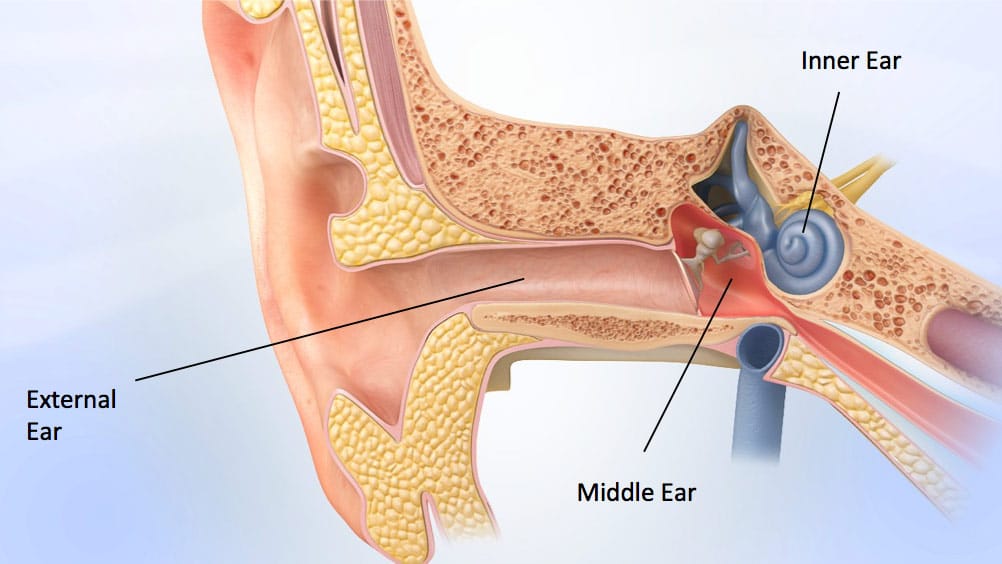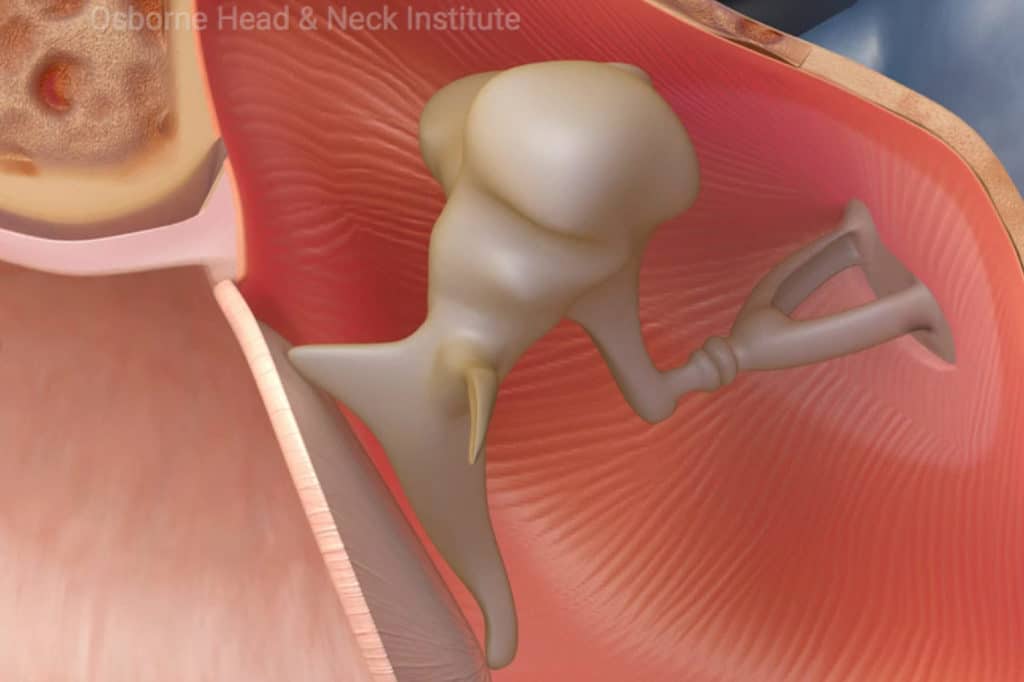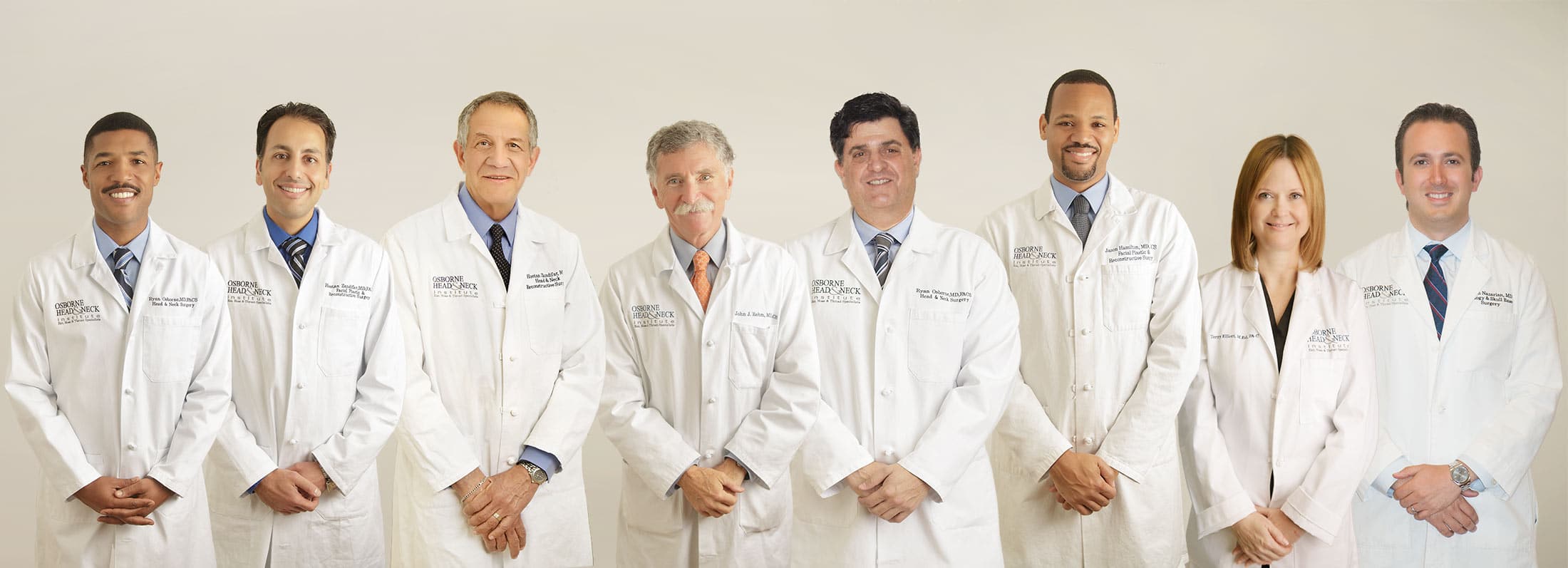
The ear is divided into three parts:
The external ear
The middle ear
The inner ear
Each part performs an important function in the process of hearing:
1. Sound waves pass through the canal of the external ear and vibrate the eardrum
2. The ear drum is connected to 3 small bones which conduct sound energy into mechanical energy. This process begins with the malleus (hammer), then the incus (anvil), and finally reaches the stapes (stirrup)
3. The mechanical vibrations are then transformed into fluid movement in the inner ear. The inner ear is a thick bony organ that is filled with fluid on the inside. As the stirrup moves the fluid in the inner ear, tiny hair cells move side to side and convert the fluid energy into electrical energy.
4. The electrical energy from the hair cells is transferred onto tiny nerve fibers which lead up to the main hearing nerve (the cochlear nerve).
5. The hearing nerve then carries the sound impulses to the brain where they are interpreted as understandable sound.

Conductive Hearing Loss
When there is an obstruction or disease that involves the mechanical component of sound transmission, the impairment is called a conductive hearing loss. This can result from wax in the ear canal, a hole in the ear drum, cholesteatoma, middle ear fluid, or a fusion, dislocation, or erosion of the 3 bones of hearing.
Sensorineural Hearing Loss
This is the more common type of hearing loss, which has to do with the electric, or nerve component of the inner ear. Many times this has to do with deterioration of the inner ear due to noise trauma, genetics, ototoxic drugs, autoimmune issues, infections, or tumors involving the hearing nerve.
Mixed Hearing Loss
When there is difficulty in both the middle and inner ear, a combination of conductive and sensorineural impairment exists. This can be seen in processes such as chronic infections, post-surgical patients, advanced otosclerosis, and genetic/congenital hearing problems.
- Chronic Ear infection
- Growths, tumors
- Birth defects
- Hole in the ear drum
- Exostosis (surfer's ear)
- Uncontrolled allergies resulting in ear symptoms
- Microwick procedure
- Myringotomy tube placement (ear tubes)
- Certain types of eardrum repair (myringoplasty)
- Middle ear injections
Under the leadership of Dr. Ronen Nazarian, fellowship-trained otologist, the Division of Otology and Restorative Hearing Surgery values the conservative management of ear disorders. When surgery is required, he incorporates cutting edge research, technology, and, most importantly, compassion into the operating room setting.
Otologic surgery treats complex, minute anatomy, and requires the use of an operating microscope for most surgeries. This results in minimally-invasive surgery with most procedures having no visible incision or only a small incision behind the ear. There is minimal reported pain and patients are usually discharged on the same day as their procedure.
Hearing loss may be caused by problems that can be treated surgically. Some causes of surgically-treatable hearing loss include:
- Cochlear implantation
- Bone anchored hearing implant (BAHA)
- Tympanoplasty
- Mastoidectomy
- Stapedectomy
- Ossicular chain reconstruction
- Exostosis (surfer’s ear)
- Microtia Repair
- Canal atresia repair
- Cholesteatoma: This overgrowth of tissue is usually due to chronic ear infections. Surgical treatment can result in significant improvement in hearing; however recurrent cholesteatoma may occur. Treatment of recurrent cholesteatoma requires the care of an expert in ear surgery.
- Trauma: If the small bones of hearing are disrupted by trauma (i.e., car accident, head trauma, etc), repairing the bones may return normal hearing
- Otosclerosis: The smallest bone of hearing, the stapes, can become rigid and unable to conduct sound. Replacing this bone with a prosthesis restores hearing.
- Eustachian tube dysfunction: When the ear is unable to equalize pressure with the environment, it can result in muffled hearing. New techniques in Eustachian tube management allows pressure equalization and clearer hearing.
- Severe to profound hearing loss: When even a hearing aid doesn’t give a patient the clarity and understanding of normal speech, a cochlear implant may be an option. A cochlear implant works by stimulating the actual nerve of hearing through an electrode.
Some procedures may be done in the office setting, depending on the patient and the disorder. These include:
- Microwick procedure
- Myringotomy tube placement (ear tubes)
- Certain types of eardrum repair (myringoplasty)
- Middle ear injections
Other procedures may need to be done in a surgical center due to needed equipment, patient comfort, length of the procedure, and complexity of the case. These procedures include:
- Cochlear implantation
- Bone anchored hearing implant (BAHA)
- Tympanoplasty
- Mastoidectomy
- Stapedectomy
- Ossicular chain reconstruction
- Exostosis (surfer’s ear)
- Microtia Repair
- Canal atresia repair


